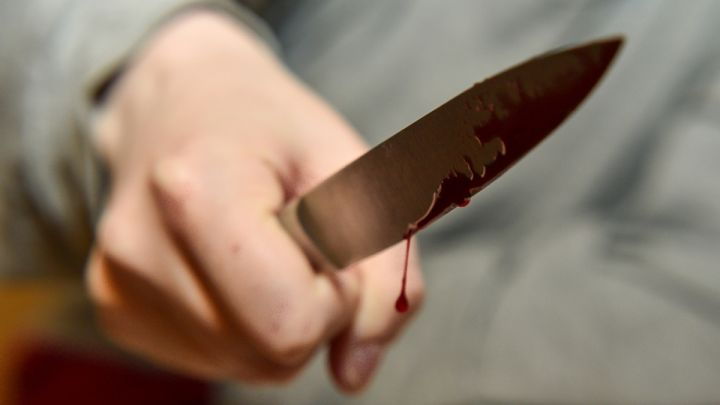How to Survive Knife and Hand-to-Hand Combat Injuries
In self-defense situations, you may face armed opponents. While there are many guides on first aid, classic approaches are often impossible until the threat is neutralized. You need immediate measures to restore your ability to keep fighting. This article is based on materials by renowned martial arts experts Konstantin Voyushin and Alexey Mamatov.
Stopping Nosebleeds During a Fight
Nose injuries with heavy bleeding are common. To stop the bleeding quickly, tilt your head back and strike the back of your head with the edge of your hand a few times, about 2-4 fingers above the base of the skull. This can be done by yourself or with help.
Throat Injuries: Adam’s Apple and Airway Blockage
Blows to the Adam’s apple are common in self-defense. A strong hit can cause death not from direct trauma, but from reflex swelling of the larynx, blocking the airway. If this happens, you must perform an emergency tracheotomy (coniotomy): puncture the trachea 1-2 rings below the Adam’s apple with a knife tip (limit the blade to 2-3 cm), then insert any open tube (like a pen barrel). Only medical professionals or those with special training should perform this. If the cartilage is only displaced, try to help by sitting the victim down, tilting their head back, and giving 2-5 light palm strikes to the forehead. Then, gently realign the cartilage with careful pressure. This can be done to yourself if needed.
Dislocations During Combat
Dislocations can be a major problem. For a finger dislocation (except the thumb), tape the injured finger to a healthy one. For an elbow dislocation, tightly wrap the arm from shoulder to wrist with any available material.
Hand and Wrist Cuts
- Minor cuts: Usually not serious, except for palm cuts, which can make it hard to grip a weapon. Switch your weapon to the uninjured hand. For back-of-hand or finger cuts, open your fist and use the edge or “boat” of your hand. For palm cuts, squeeze a crumpled cap or cloth in your fist to reduce bleeding and use the back of your hand.
- Wrist cuts: Deep cuts to the inner wrist can sever major arteries, leading to unconsciousness in 30 seconds and death in another 30. Immediately press the injured wrist against your chest (inside your jacket or belt) to reduce bleeding and switch your weapon to the other hand. This protects the wounded arm and vital organs, and gives you 2-3 times more time before losing consciousness.
- Elbow crease cuts: Deep cuts here can sever arteries and nerves, making the forearm useless. Immediately bend the arm tightly at the elbow, placing a solid object (like a knife sheath or lighter) in the crease to compress the wound. This reduces blood loss and allows you to use your elbow for defense or attacks.
Thigh and Leg Injuries
Thigh wounds are extremely dangerous due to the femoral artery. If it’s cut, you have very little time, especially if weight is on the injured leg. Shift your weight to the uninjured leg, keep the wounded leg on its toes, and use it for defense or attacks as needed. For lower leg wounds, the risk of death is lower, but use the same approach.
Abdominal Injuries
If you’re stabbed in the abdomen but still moving, your aorta is likely intact. You may survive for hours, but infection is a risk. Finish the fight, take antibiotics if available, and seek medical help immediately. If your intestines protrude, do not push them back in—cover them with clothing and go to a hospital. If a weapon is left in the wound, do not remove it; secure it and seek help. If the weapon is removed, plug the hole with your finger and get medical attention.
Chest Injuries
Stab wounds to the chest are less likely to be fatal unless a major organ is hit. If you have trouble breathing and see blood bubbles at the wound, cover the hole with your hand, then seal it with plastic or any airtight material and tape it down. Seek medical help immediately.
Neck and Facial Injuries
For shallow neck cuts, bend your head toward the wound and press your shoulder against it to reduce bleeding. After the fight, press a cloth to the wound and bandage it in place. If an ear, part of the nose, scalp, or cheek is cut off, collect the severed part, place it in a bag, and go to the hospital within 40 minutes for possible reattachment.
Post-Fight Self-Check
After the fight, check your entire body for injuries, including areas you can’t see. Adrenaline can mask pain and injuries. The body’s shock response has two phases: the first (erectile) boosts strength and pain tolerance; the second (torpid) can bring sudden collapse. Stay alert and do not let yourself lose consciousness—your chances of survival are much higher if you stay awake and focused. Repeat affirmations, recite poems, or count to keep your mind active. Massage pressure points under your nose and between your thumb and index finger. Your motto: “I WILL LIVE!”
Helping a Comrade
- If someone is struck in the chest and their heart stops, before starting chest compressions, try striking the area between the left nipple and breastbone with the edge of your fist—a sharp but not too strong blow (similar to a defibrillator). Check for a pulse; if none, repeat once. If still no pulse, begin CPR and artificial respiration.
Hopefully, you’ll never need these tips. But if you do, be prepared—because, as Konstantin Voyushin says, the prepared survive.



